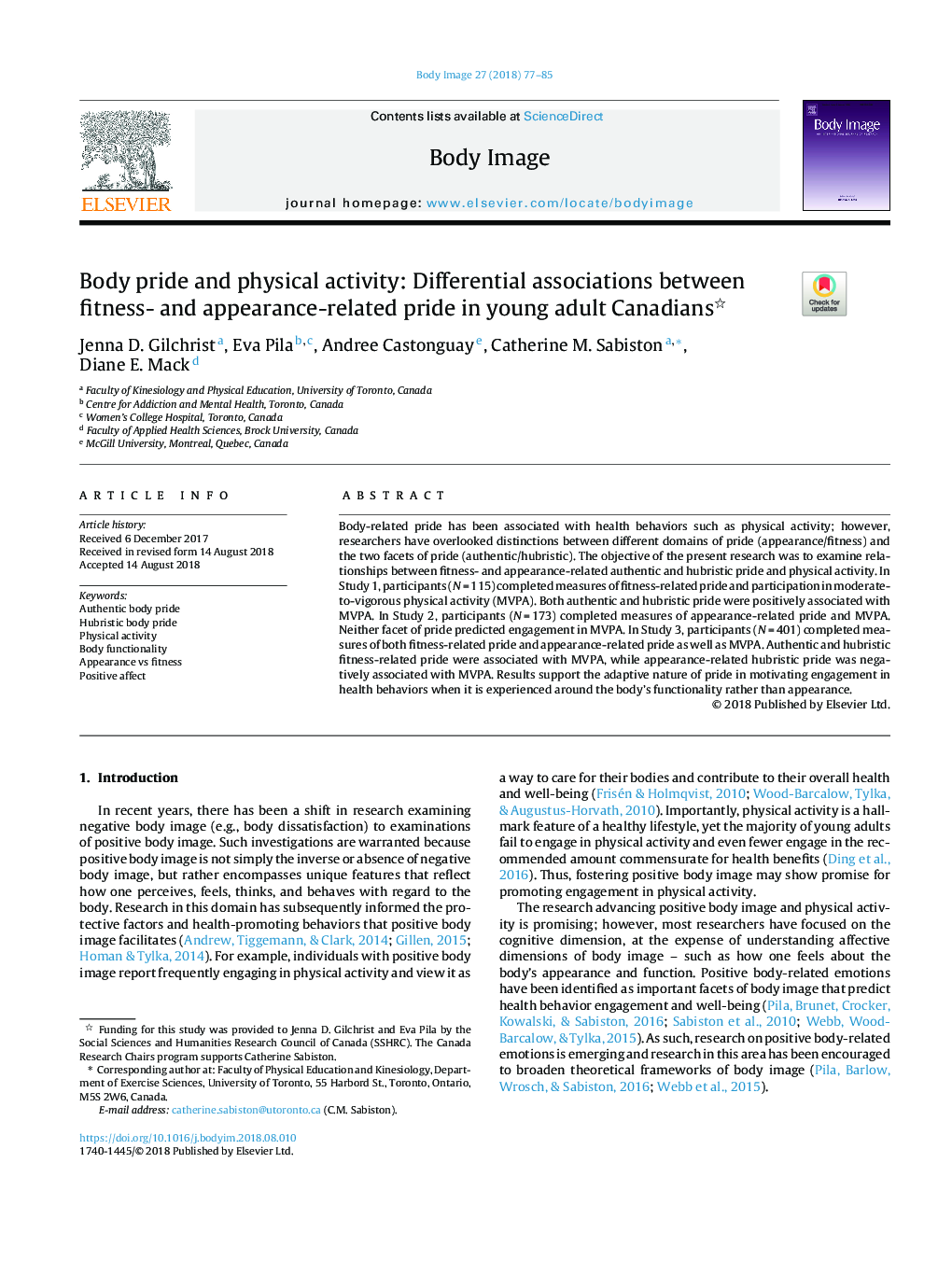| Article ID | Journal | Published Year | Pages | File Type |
|---|---|---|---|---|
| 9952935 | Body Image | 2018 | 9 Pages |
Abstract
Body-related pride has been associated with health behaviors such as physical activity; however, researchers have overlooked distinctions between different domains of pride (appearance/fitness) and the two facets of pride (authentic/hubristic). The objective of the present research was to examine relationships between fitness- and appearance-related authentic and hubristic pride and physical activity. In Study 1, participants (Nâ=â115) completed measures of fitness-related pride and participation in moderate-to-vigorous physical activity (MVPA). Both authentic and hubristic pride were positively associated with MVPA. In Study 2, participants (Nâ=â173) completed measures of appearance-related pride and MVPA. Neither facet of pride predicted engagement in MVPA. In Study 3, participants (Nâ=â401) completed measures of both fitness-related pride and appearance-related pride as well as MVPA. Authentic and hubristic fitness-related pride were associated with MVPA, while appearance-related hubristic pride was negatively associated with MVPA. Results support the adaptive nature of pride in motivating engagement in health behaviors when it is experienced around the body's functionality rather than appearance.
Related Topics
Health Sciences
Medicine and Dentistry
Psychiatry and Mental Health
Authors
Jenna D. Gilchrist, Eva Pila, Andree Castonguay, Catherine M. Sabiston, Diane E. Mack,
